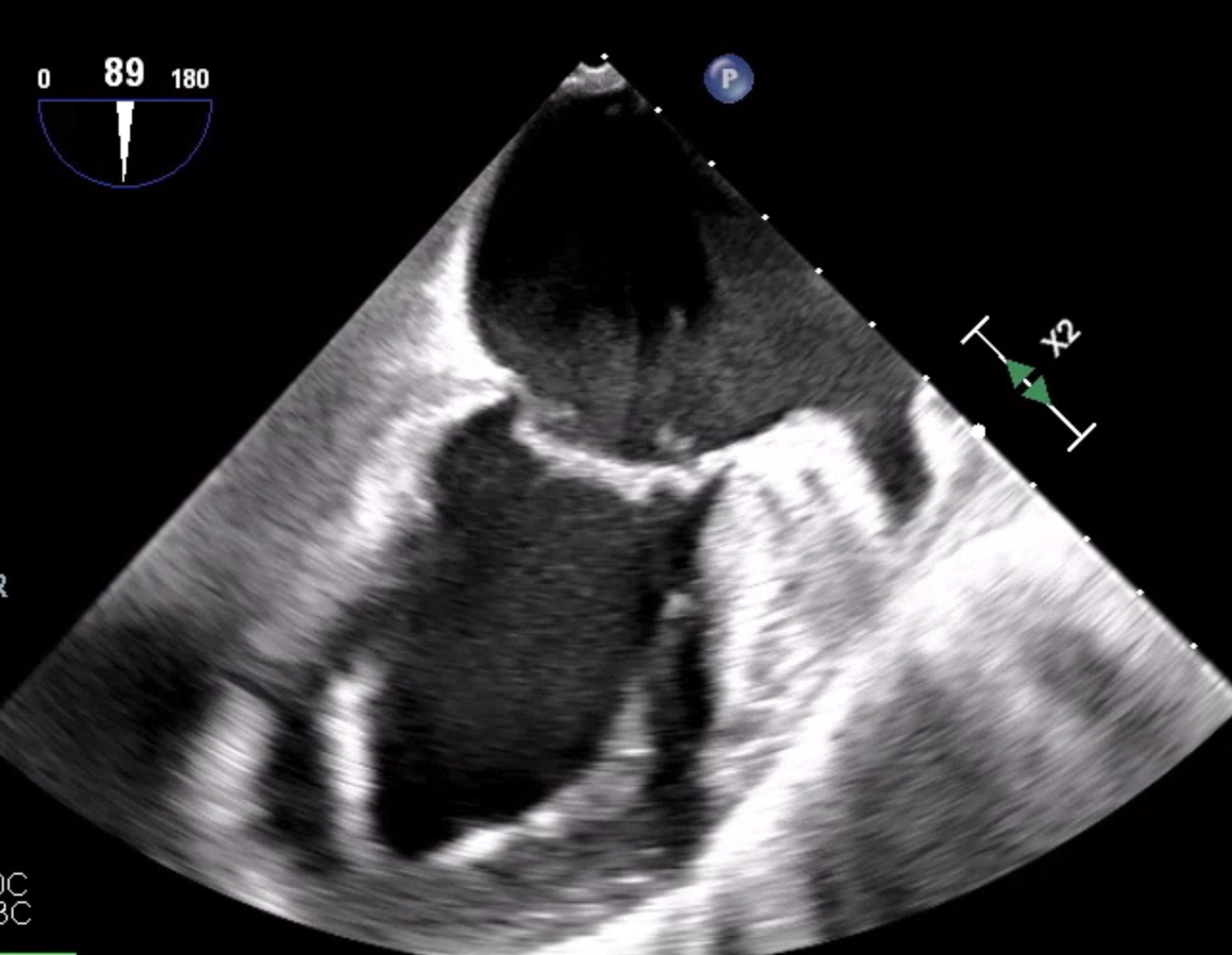Trans-Oesophageal Echocardiogram
A Trans-Oesophageal Echocardiogram (TOE) is a specialised type of echocardiogram, which is an ultrasound of the heart. Instead of taking images from the outside of the chest, a TOE uses a small probe, inserted into the oesophagus (the food pipe connecting the mouth to the stomach), to get close-up, detailed images of your heart.
Why is a TOE done in relation to the Left Atrial Appendage (LAA)?
One of the primary reasons for conducting a TOE is to closely inspect the LAA, a small pouch in the heart’s left atrium. This area can sometimes harbour blood clots, especially in patients with atrial fibrillation or other heart conditions. A TOE can help determine whether there is a clot, and thus make sure that any upcoming procedure - such as DCR (cardioversion) or catheter ablation of atrial fibrillation - is safe.

Image from a Trans-Oesophageal Echocardiogram
How is the TOE procedure performed?
- Preparation: You’ll be asked to fast prior to the procedure.
- Sedation: Before the procedure, you’ll be given sedatives to help you relax.
- Throat Numbing: A local anaesthetic will be sprayed into your throat to numb it and make the insertion of the probe more comfortable.
- Probe Insertion: A thin, flexible tube with an ultrasound device at its tip will be gently inserted into your oesophagus.
- Imaging: Once in place, the probe will capture detailed images of your heart. The procedure typically lasts between 10-30 minutes.
Why do a TOE instead of a regular echocardiogram?
There are certain structures within the heart that are not clearly seen on a regular echocardiogram. One of these structures is the left atrial appendage (LAA) where clot can form.
Are there any risks?
Complications from TOE are rare but can include:
- Sore throat
- Reaction to sedatives
- Minor bleeding
- Very rarely, tear or injury to the oesophagus
What should I expect after the procedure?
- You may feel groggy from the sedatives for a few hours.
- A mild sore throat is common but should resolve in a day or two.
- It’s advisable to have someone accompany you home after the procedure.